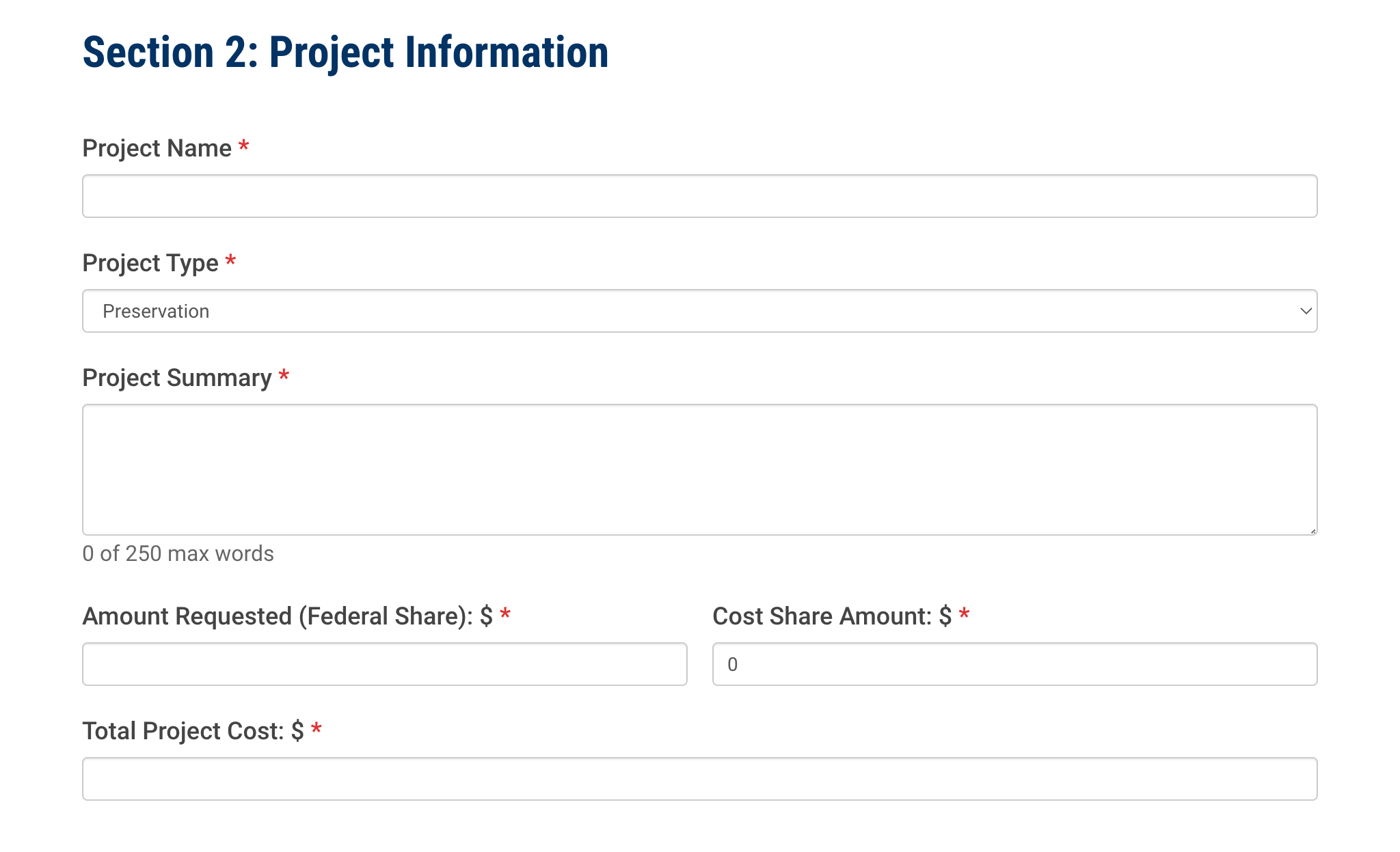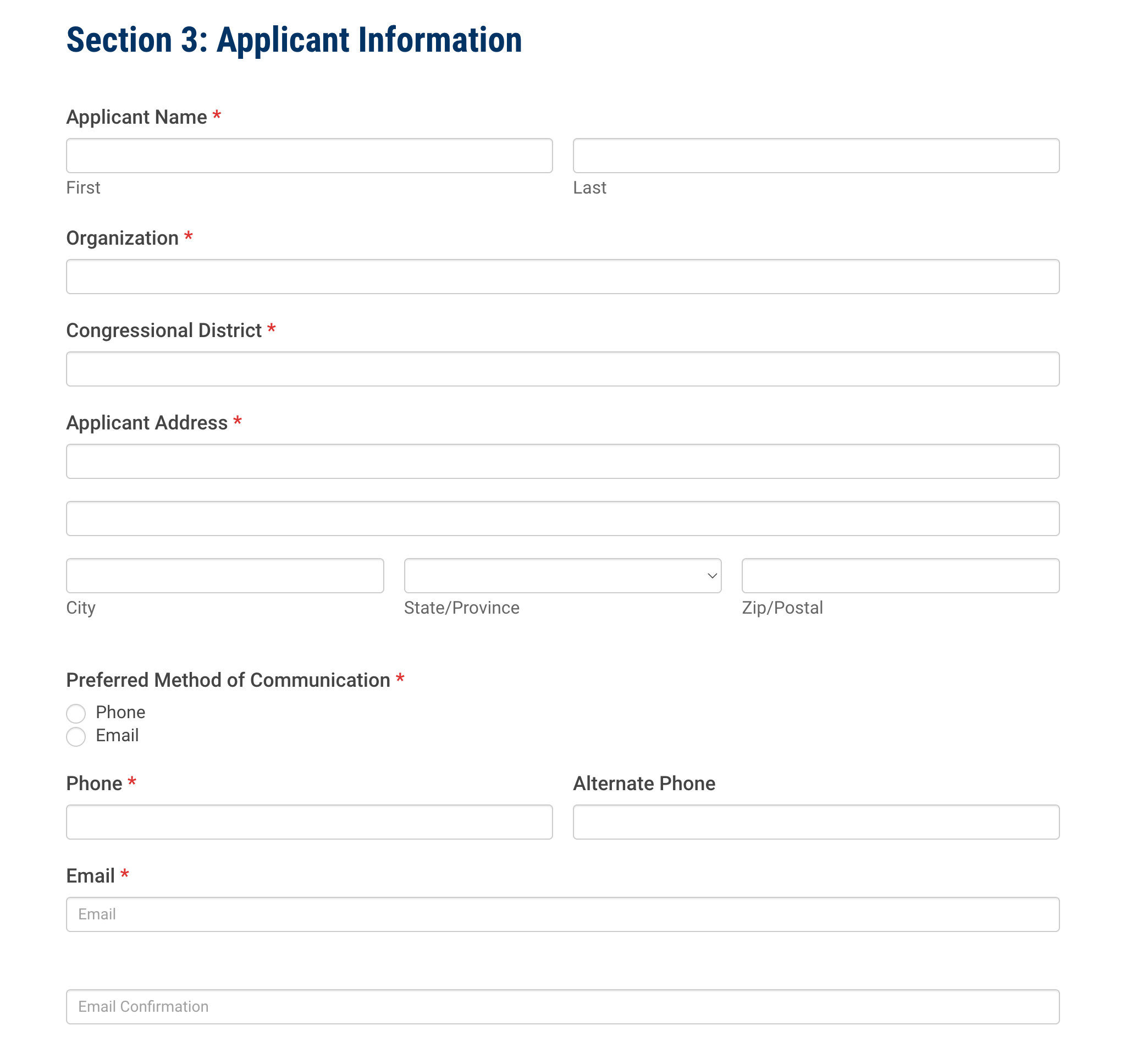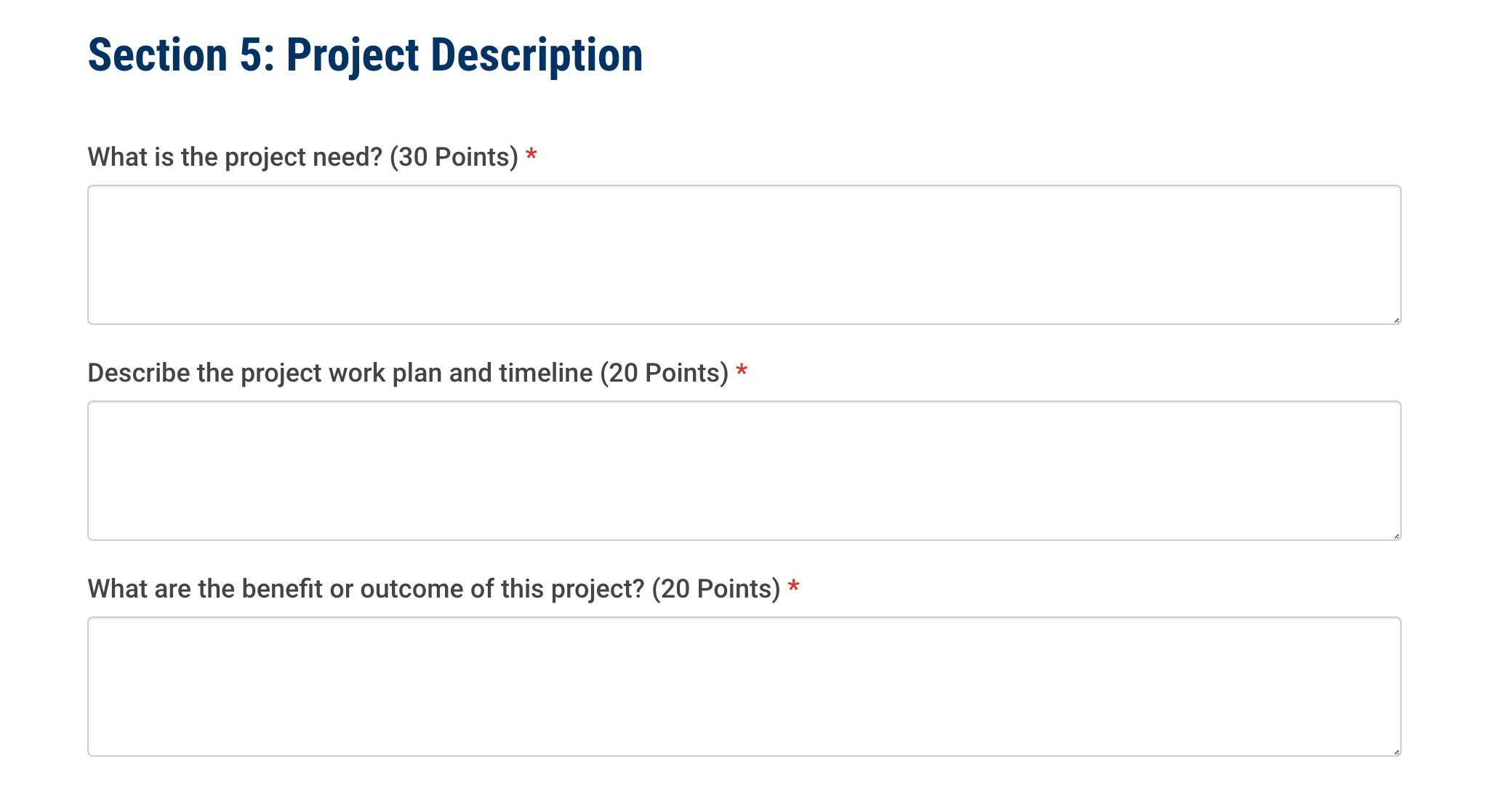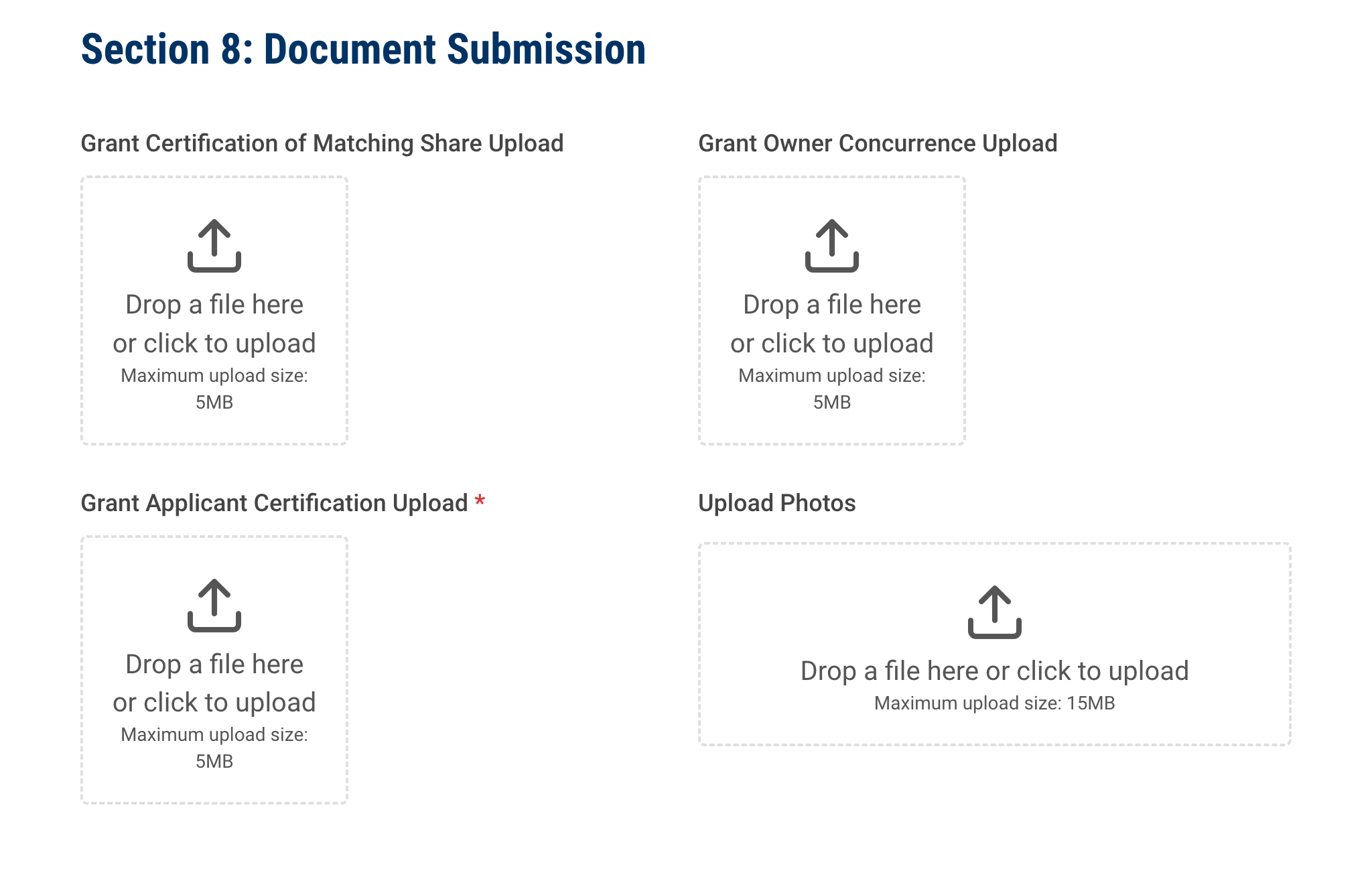Applications
The National Underground Railroad Network to Freedom program, in collaboration with the Association for the Study of African American Life and History is making $500,000 available for grants in 2024.
About the Grants
Grants will be awarded competitively and will range between $1000 and $100,000. Funds can be used for preservation and restoration of buildings associated with the Underground Railroad (UGRR), for interpretation, and for additional historical research related to previous Network to Freedom listings. New Network to Freedom members (sites, programs, or facilities) that are accepted from the January 15, 2024, round will also be eligible to apply for preservation and interpretation funds. Preference will be given to those listings that have not previously received Network to Freedom grants though members that have already received grants are also encouraged to apply. Preference will be given for proposals with at least 50% matching funds, though matching funds are not required.
This year, the NTF wants to encourage student engagement and education. Education is a pivotal component to the Network to Freedom’s mission, “to honor, preserve and promote the history of resistance to enslavement through escape and flight.” These educational opportunities will encourage collaboration among the youth representing our diverse communities today and promote continued preservation of sites and stories of the Underground Railroad for generations to come.
- June 17, 2024 – Application Period Opens
- June 17, 2024 @ 1PM EST – Zoom presentation announcing the opening of the 2024 Grant Cycle with Q&A
- TBA – Network to Freedom Grant Program Office Hours.
- August 19, 2024, 11:59 PM EST – Application period closes. Matching funds must be documented to be in hand by this date to be awarded extra points.
- September 2024 – Program Review of Grant Applications
- October 2024 – Grants awarded and agreements finalized.
Sites, programs, and facilities previously listed on the Network to Freedom may propose projects for these grants. Grants may be awarded to Private and non-profit organizations, as well as, state, tribal, and local governments. Federal agencies cannot receive these grants, but partner organizations can receive a grant for federally owned property with the written consent of the managing agency. A letter of consent from the property owner must be included for all grants.
Grants will also be awarded to research and write applications to list new sites in the Network to Freedom. A letter of consent for including the property in the Network to Freedom must accompany the grant proposal.
Please note that eligible proposals from religious properties listed in the Network to Freedom are restricted to research projects, preservation projects or NTF signs only. These projects
must have a specific connection to Underground Railroad history, rather than religious history.
Proposals submitted under this program are requests for consideration for a grant, and not a promise for funding. No work covered in this proposal is to begin until the applicant has been notified in writing that funds have been awarded and has accepted in writing the terms and conditions of the grant. The owner of the site, program or facility applying must provide written consent. The target date for announcing awards is Mid-October 2024, but please allow some flexibility.
Projects MUST be completed by December 31, 2025.
Grants will be administered in accordance with all applicable Federal and state laws, regulations, policies, requirements and guidelines, including OMB Circular A-102 and A-110 (as applicable), Title VI of the 1964 Civil Rights Act, non-discrimination on the basis of handicap (Sec. 504 of the Rehabilitation Act of 1973), and equal employment opportunity and labor law requirements of Federal grants.
Congress authorized the creation of the NTF within the NPS to research, interpret, and preserve sites and resources associated with the Underground Railroad. As part of the national network program, the NPS supports projects that achieve the goals of preservation, interpretation, and education of Underground Railroad history. Specifically, the projects should support or enhance the Underground Railroad associations for which site, program, or facility was listed in the NTF. Examples of grant projects that support these objectives and are eligible for consideration include but are not necessarily limited to:
- Markers or signs identifying the site as being in the NTF
- Interpretive markers, brochures, exhibits, websites, videos;
- Historical research in support of interpretation or publications;
- Oral history and documenting oral traditions;
- Educational curricula, lesson plans, and teacher workshops;
- Cultural Resource surveys, including archeological survey;
- Preservation and restoration of historic buildings, structures, landscapes;
- Projects to enhance physical accessibility of sites and programs (including installation of ramps or lifts)
- National Register of Historic Places or National Historic Landmark documentation and nominations;
- Workshops and public educational programs;
- Technical assistance in associated site and/or landscape identification; and
- Preservation and stabilization of cultural artifacts, collections, and documents;
- Research and writing for applications to list new sites in the Network to Freedom.
The National Underground Railroad Network to Freedom Program does NOT fund:
- Projects already started or currently underway;
- Purchase (in fee simple or interest) of historic sites, buildings, structures, objects, or cultural artifacts;
- Operational funds or administrative salaries;
- Equipment purchase;
- New construction (in contrast to repair of existing features), with the limited exception of new construction required to create access for the disabled to historic resources;
- Religious properties listed in the Network to Freedom are restricted to preservation projects or NTF signs only. These projects must have a specific connection to Underground Railroad history, rather than religious history;
- Projects designed to raise funds
- Projects that do not have a direct connection to the Underground Railroad values described in the Network to Freedom application. For example, a project to preserve a building in which an exhibit is housed, if the building is not connected to the Underground Railroad history;
- Food or refreshments of any sort;
- Recurring annual programs, events, or workshops (beyond the first).
- Grant-assisted preservation work must acknowledge NPS grant assistance throughout the duration of the project. Include the cost of installing a Project Sign in the requested project budget because one must be erected at the site.
- For non-construction projects, NPS grant assistance must be acknowledged on any products resulting from the grant. Text for this acknowledgement will be in the grant agreement.
- All grant project work requires monitoring and approval by NTF staff. For interpretive products, markers, websites, etc. NTF staff must approve content and design in the draft stages. Invoices for payment must be approved by NTF staff before submission to ASALH for payment.
- Grant recipients must ensure that projects are carried out in a timely and professional manner. Grant funds not expended will expire and be “re-captured” by the federal government.
- Depending upon the nature of the project, Section 106 Compliance to avoid adverse effects on historic properties may be required. Your regional manager will help you through this process.
- Preservation/restoration projects funded under this program constitute “undertakings” as defined by Section 106 of the National Historic Preservation Act, as amended (16 USC 470). Accordingly, for properties listed in, or eligible for listing in the National Register of Historic Places, grant recipients must work with your regional manager to complete the consultation process with the State Historic Preservation Officer (SHPO) and the Advisory Council on Historic Preservation prior to the undertaking the project. The consultation process aims to ensure that proposed work will not cause any adverse effect to the historic features of any National Register listed or eligible property.
- Preservation and Restoration of Historic Properties must be consistent with the Secretary of Interiors Standards for Treatment of Historic Properties. These Standards can be found online https://www.nps.gov/tps/standards.htm or by contacting the NPS Network to Freedom regional program manager.
The grant award for fiscal year 2024 is up to $100,000 for the Federal share. The minimum grant award will be $1000.
Matching funds are not required for these grants, though bonus points in the project review are awarded for providing 50% and 100% match to the federal share. Project proposals are ranked on a 100 point scale. Projects showing a 50% cash match will get 5 bonus points. Projects with a 100% cash match will get 10 bonus points. Matches must be cash, and not “in kind” services or donation. To qualify for these bonus points, applicants must provide documentation that the match is “in hand” by August 19, 2024
Grant proposals without matching funds are also encouraged. Plenty of proposals without match have been funded because the project was compelling, and the proposal well explained.
A committee of reviewers, including NPS Network to Freedom regional program managers, other NPS staff, reviewers selected by ASALH will rank applications and make funding recommendations. Proposals are rated on a 100-point scale. The weight for each section is indicated below. Each reviewer will rank the projects and add bonus points. All scores will be totaled and ranked according to the highest scores.
For Construction Projects- a project sign must be erected at the site of the grant-assisted repair work during the duration of the project to acknowledge NPS grant assistance. For non-construction projects- NPS grant assistance must be acknowledged on any products resulting from the grant. Language for the acknowledgement will be in the final signed grant agreement.
Proposals must be submitted electronically through the internet portal at www.asalh.org/. If you are unable to submit the application electronically, please contact network_to_freedom@nps.gov or call (856) 873-0270. To avoid glitches with the internet, submit proposals ahead of the deadline if you can. Incomplete application and applications received after the deadline of Monday, August 19, 2024, 11:59 pm EDT will not be considered. Additional materials sent separately from a proposal will not be considered part of the proposal and will not be included in the evaluation.
- One electronic application, submitted through the portal;
- An Owner Concurrence Form signed and dated by the owner of record;
- A signed and dated Applicant Certification Form;
- For preservation projects, minimum of four (4) digital photographs which illustrate the property in general with details of the area proposed for preservation.
- For proposals to develop applications to list new sites on the Network to Freedom, include the resume of the proposed author of the application.
- Detailed budget;
- Match Certification Form and documentation of the non-Federal match, if applicable. The Match Certification Form must be signed by a person legally authorized to commit the funds to the grant project. In-kind matches are not eligible. Please make sure to black out any account numbers or personally sensitive information contained in financial documentation that is submitted.
In order to ensure that your proposal receives the best consideration possible, here are some suggestions from our office that you may find useful in preparing your application.
- Proofread your application.
- The project must be related to the reason why the site, program or facility is listed in the Network to Freedom. For example, if the listing is for an interpretive program, the grant project must be related to enhancing the program.
- Help the reviewers understand why the project is important or what the need is.
- Remember that application reviewers may not be familiar with your proposed project, so you will need describe the historic resource and your project so that they can understand why it is important.
- Clearly state what it is you want to accomplish with grant funding – a reviewer should be able to read your application and know what you are proposing.
- There must be a connection between the proposed budget and the project; every budget item should be discussed in the narrative section(s) of the application so that reviewers can understand why items are necessary.
- Make sure the grant amount requested on the first page of the application matches the grant amount indicated in the budget section.
- Check your math in the budget section to make sure that all the budget detail amounts add up to the budget summary.
- Include an itemized budget covering all of the expected costs related to the project.
- The budget justification should include all cost elements of the proposed budget and how the figures were derived.
- A longer response is not necessarily better.
- Remember to answer every part of each question.
- Be realistic with a proposal’s timeline and remember to budget for reports and reporting requirements.
- If possible, use good photographs to illustrate your project.
- Submit ahead of the deadline if you can, to avoid internet submission issues that would have your application miss the deadline
- Proposals for projects without owner consent will not be considered. If the owner is the grant applicant, a separate consent is not required.
Application Details portion of the site does not require revision.
APPLICATION DETAILS
- A minimum of four (4) digital photographs must accompany the application. Two must be general views of the historic property, and the other two must document the threat or damage. A list of photographs should be included which provides a description of view indicating direction of camera, and the date of the photograph
- Discuss the current condition of the resource, the nature of any threats, the proposed preservation work and whether the project will accomplish enough work to preserve the structure and make it useable if the project is performed. Indicate what remaining work will be required after this grant-assisted work is performed.
For research projects
- Describe the research need and proposed methodology
- Describe how the information will be used to enhance preservation of Underground Railroad history.
For interpretation or sign projects, describe the product that will be created and the source of the information.
Section 5A Project Need (30 Points)
- Describe how this project addresses the goals and objectives of the National Underground Railroad Network to Freedom Program.
- Articulate how the project enhances the values and associations for which the site, program, or facility was listed in the Network to Freedom.
- Describe why the project is needed. For example
- Is the building in bad condition?
- Do exhibits have old, outdated information?
- Are signs needed to tell the Underground Railroad story?
- Are there important questions about the Underground Railroad story that need more research?
- Is your project to develop an application to list a new site in the Network to Freedom? If so, what is the site and why is it significant?
Section 5B Project Work Plan and Timeline (20 Points)
- Describe project objectives, activities, and desired results are to be designed and achieved, and a reasonable time schedule that provides for the completion of the project.
- List project personnel, including their qualifications and experience, and describe their responsibilities in carrying out the project. Describe the process used.
- Proposals for research projects must provide a research plan that explains the research question that the project will address. The plan should also describe the primary sources (i.e., newspapers, diaries, letters, tax records, census records, military records, etc.) that will be consulted as part of the research and the type of information that the sources are expected to provide that will address the research questions. Also list research facilities to be utilized for the project
Section 5C Benefit or Outcome (20 Points)
- The proposed project must produce tangible products or benefits for the NTF member.
Section 6 Project Budget (15 Points) and Justification (15 Points)
- The budget must describe all aspects of the project with dollar figures and all listed items must be eligible, reasonable, and relevant to the project.
- Column totals should add up correctly and request total dollar figures be the same wherever cited across the document.
- Please note that equipment may be rented for the project but grant funds cannot be used for acquisition of construction or similar equipment.
- Explain all cost items listed in the budget and show why they are required to achieve project aims and objectives. Budget categories in the justification should appear in the same order as in the budget.
Section 7A Bonus: New Grant Recipients (5 Points)
- Projects proposed by current NTF listings that have previously not been awarded grant funding will receive bonus points.
Section 7B Bonus: Matching Funds (5-10 Points)
- Projects which include funds matching at least 50% of the grant amount requested will be awarded 5 bonus points in their evaluation, and those with 100% or greater will be awarded 10 points in their evaluation.
- To qualify for these bonus points, all the matches must be cash, not in-kind. The match must also be documented as “in hand” by the time of the submission of this grant application.
- Any proposal that includes matching funds that cannot provide the documentation of availability of the funds by that date will not receive the bonus points in their final ranking by the review committee.
- List the sources and amounts of the non-Federal matching share. Cash Cost Match -encompasses all contributions to the project incurred and paid for during the project. This includes payments for personnel, supplies, equipment, activities and items necessary for the project. Project administration costs may not be used as matching share. All of the non-Federal matching share must be expended during the grant period.
- To receive these bonus points, applicant must submit signed and dated Match Certification Form and provide appropriate supporting information documenting the match as “in hand” by APRIL 30, 2021. Any proposal that includes matching funds that cannot provide the documentation of availability by that date will not receive the bonus points in their final ranking by the review committee.
Section 7C Bonus: Education (5 Points)
- Developing lesson plans, teacher materials, and curriculum materials
- Teacher workshops on how to teach the UGRR
Section 7D Bonus: Youth Engagement (5 Points)
- Involving students in researching UGRR sites and writing NTF applications
- Involving students in developing exhibits, websites, videos or other interpretive material
Before You Apply
SAMPLE FORM
This online application must be submitted in one sitting/session. There is no opportunity to save your work and continue to work on one submission. Our recommendation is that you review this sample form and fill out your answers first in a word processing document.
Download and fill out the PDFs below before submitting your application
APPLICATION CHECKLIST
- One electronic application
- An Owner Concurrence Form signed and dated by the owner of record for the listing, if the applicant is not the owner.
- A signed and dated Applicant Certification Form. For preservation projects, minimum of four (4) digital photographs which illustrate the property in general with details of the area proposed for preservation.
- Detailed budget
- Resume of author of new application if applying for NTF new members.
- Match Certification Form and documentation of the non-Federal match, if applicable. The Match Certification Form must be signed by a person legally authorized to commit the funds to the grant project. In- kind matches are not eligible. Please make sure to black out any account numbers or personally sensitive information contained in financial documentation that is submitted.
APPLICATION SUBMISSION
Proposals must be submitted electronically through the internet portal at www.asalh.org/. If you are unable to submit the application electronically, please contact network_to_freedom@nps.gov or call (856) 873-0270. To avoid glitches with the internet, submit proposals ahead of the deadline if you can. Incomplete application and applications received after the deadline of Monday, August 19, 2024, 11:59 pm EDT will not be considered. Additional materials sent separately from a proposal will not be considered part of the proposal and will not be included in the evaluation.








